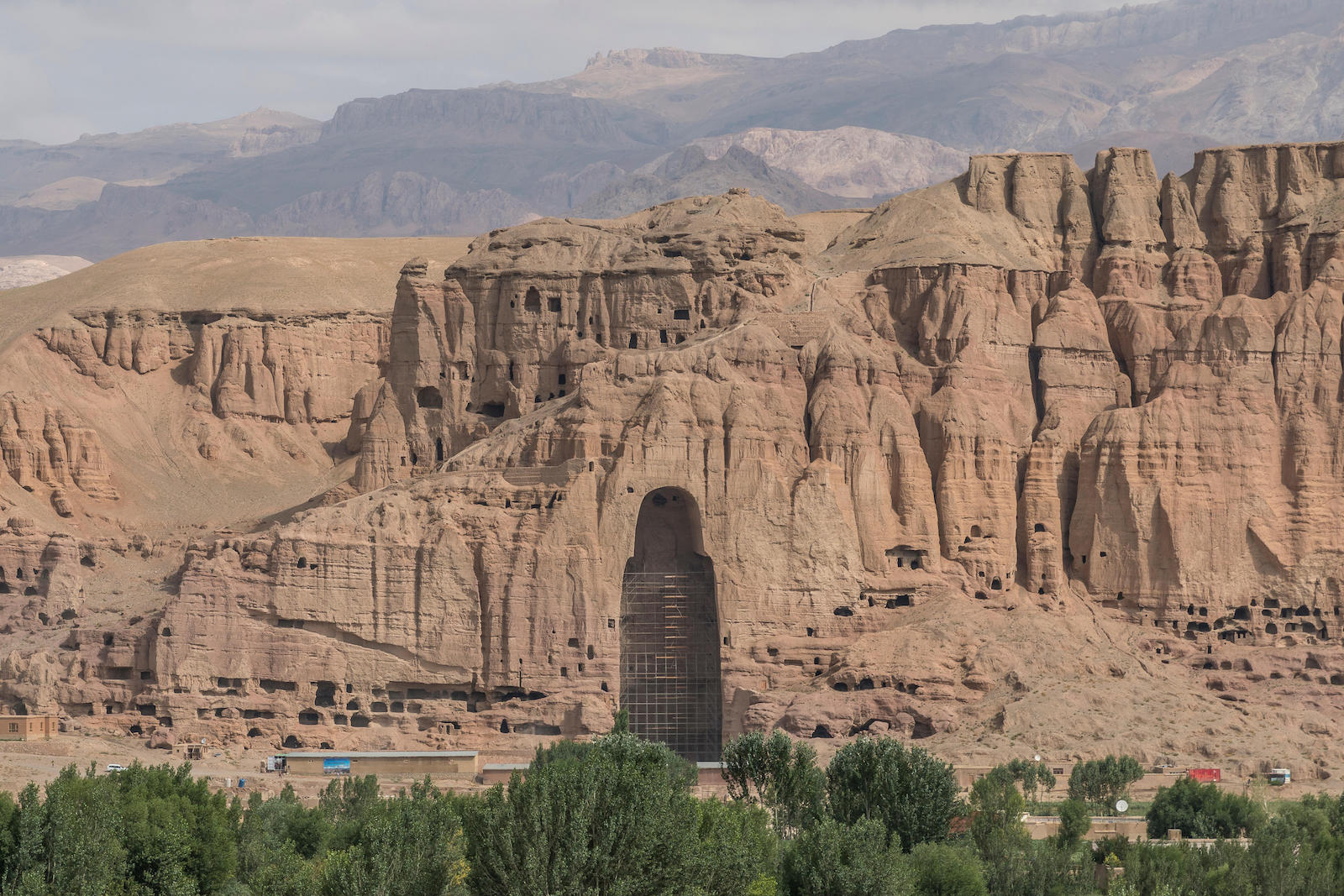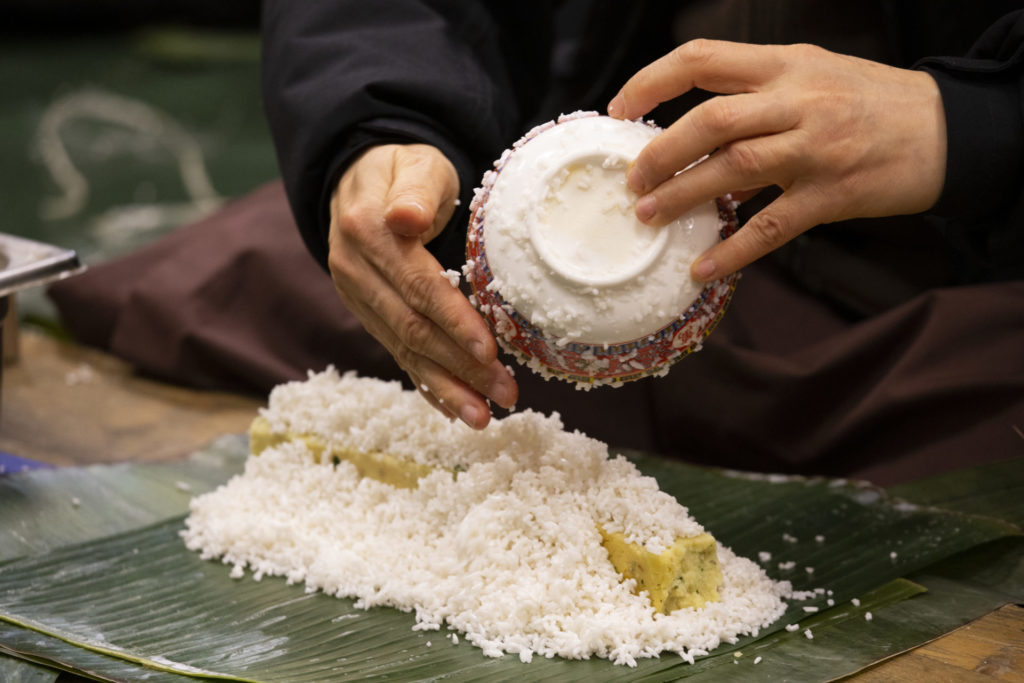Meditación Urbana
Una enseñanza sobre el Satipatthana Sutta. The post Meditación Urbana appeared first on Tricycle: The Buddhist Review.

¡Bienvenidos a nuestra nueva sección de Dharma en Español! Aquí en Tricycle reconocemos la importancia de seguir ofreciendo el dharma a los practicantes de una amplia gama de comunidades, y dado el creciente interés en el dharma en español, hemos puesto en marcha una nueva iniciativa para ofrecer enseñanzas originales y traducidas. Profesores de habla hispana de Latinoamérica y Europa han contribuido generosamente con charlas de dharma y prácticas que publicaremos en nuestra página web y en la revista, así como con artículos seleccionados de nuestra Sección de Enseñanzas. Esperamos que estos artículos cuidadosamente seleccionados les inspiren, desafíen y apoyen, y que también animen a todos aquellos que buscan la liberación a recorrer el camino de la práctica.
No dudes en hacernos llegar tus comentarios o sugerencias. Nos encantaría saber de ustedes.
Welcome to our new Dharma in Spanish section! Here at Tricycle we recognize the importance of continuing to make the dharma available to practitioners across a wide range of communities, and given the increased interest in Spanish dharma, we’ve started a new initiative to offer ongoing original and translated teachings. Spanish speaking teachers from both Latin America and Europe have generously contributed dharma talks and practice pieces that we’ll be publishing in our website and print magazine, as well as selected pieces from our Teachings section. It’s our hope that these carefully curated offerings will inspire, challenge, and support you and encourage all those seeking liberation to walk the path of practice.
Please don’t hesitate to reach out with your comments or suggestions. We’d love to hear from you.
***
En el Satipatthana Sutta el Buda nos revela que los Cuatro Fundamentos para Establecer la Atención Consciente son “el camino directo para la purificación de los seres, para la superación de las penas y las lamentaciones, para la desaparición del dolor y de la aflicción, para alcanzar el sendero noble, para la realización del Nibbana, de la libertad.” Y, ¿cuáles son los Cuatro Fundamentos? “Se mora contemplando el cuerpo en el cuerpo, las sensaciones en las sensaciones, la mente en la mente, el dhamma en los dhammas, ardientemente, con plena atención y consciencia, habiendo dejado atrás la codicia y la aflicción por el mundo.” (Satipatthana Sutta, Majjhima Nikaya 10).
A medida que he ido profundizando mi práctica de meditación, se ha hecho evidente que es posible lograr una atención clara y consciente en los diferentes ámbitos de la vida. No solo sobre el cojín o en retiros, sino también en el trabajo, en familia y, sobre todo, cuando mi experiencia se siente agobiante. Aquí quiero compartir una experiencia reciente en la que las enseñanzas del Satipatthana Sutta fueron de gran apoyo.
Acababa de mudarme de los suburbios a la ciudad de Oakland en California; me sentía a la vez emocionada y temerosa por este cambio en mi vida. En esta primera mañana, mientras esperaba el bus para ir al trabajo, un caudal de emociones se desbordaba en mi interior. El centro de transportes se sentía como una cueva urbana de concreto. Había decenas de personas desconocidas a mi alrededor, y al mismo tiempo la soledad en la multitud era evidente: personas corriendo sin mirar más allá de sus electrónicos, sin escuchar más allá de sus audífonos. Me sentía una extra más perdida en esta película.
Con las manos en los bolsillos sentí el teléfono, pero algo en mí detuvo ese impulso. Reconocí el deseo de escapar de ese lugar—”es imposible practicar aquí”, pensé. Sentí que mi práctica era inalcanzable en ese momento. Pero con una respiración profunda invité la atención al centro de mi pecho y empecé una meditación urbana:
Inhalo y exhalo. El cuerpo se relaja un poco y la sensación del aire fresco en la piel se vuelve evidente. Inhalo y exhalo. Escucho el rugido del tráfico incesante que ahoga el canto de los pájaros y el sonido del viento entre las ramas de los árboles de hojas grises y polvorosas. Inhalo y exhalo. Siento mi cuerpo con una mayor claridad. Percibo la mezcla del aroma de café de los viajeros matutinos con el dulce rocío frío y los desagradables gases que emergen de carros y autobuses. Inhalo y exhalo. Prefiero no dejarme llevar por las historias que este mar de estímulos desata en mi cabeza. Inhalo y exhalo. Olores y sonidos, placer y desagrado.
Un grupo de niños espera el bus escolar. Una niña se abraza a las piernas de su padre, ambos sonriendo. Me transportan al pasado. Mis manos frías recuerdan el abrazo de manos pequeñas, tibias, amadas. Siento un nudo en la garganta, alegría en mi corazón, los ojos húmedos. Inhalo y exhalo. Siento en mis manos la presencia de mis hijos, tan lejos y tan cerca. En este momento, el cuerpo se siente suave y apacible, la mente es espaciosa y luminosa, aquí y ahora. No hay nada que cambiar, nada que arreglar, nada que planear. Inhalo y exhalo. Recuerdos, encanto y anhelo.
Me pierdo de nuevo. El bus está demorado, aprieto los labios y las mandíbulas, los hombros se encogen, los dedos se crispan. Acuérdate. No hay nada que el teléfono pueda hacer para ayudarte. Me sorprende la coreografía del deseo que siento por esa cajita de ventana brillante—¿ventana o calabozo?
Inhalación. El pecho se expande. Exhalación. El diafragma se suaviza, se relaja. Se suaviza mi rostro, siento el peso del cuerpo y la rigidez del asfalto en mis pies.
Imágenes desfilan por los ojos, el sol brillante y el océano del cielo contrastan con la oscuridad debajo de este puente. Bocinas, el chirrido del tren, las voces infantiles. Luego el aire frío en la piel, el aroma del café, el smog. El peso de la mochila en la espalda. Añoro el silencio y el canto de los pájaros y de los ríos, anhelo el espacio verde que habité hasta hace pocos días. Inhalando y exhalando. La respiración arrulla mi cuerpo y mi corazón. Suelto, suavizo, dejo de resistir este momento.
Bienvenidos sean los seis sentidos, en sucesión y todos a la vez. Descanso en mi cuerpo, habito mi cuerpo. Siento el abrazo y la paz que me brinda el dhamma. Me regocijo en la práctica y en este momento de libertad.
La Práctica
Como cualquier otro entrenamiento, la práctica del Satipatthana prospera y madura con dedicación y regularidad. Sin embargo, no es necesario tener años de experiencia meditando y conocer las escrituras budistas o las palabras en pali. La posibilidad de la paz y la libertad que la práctica ofrece es muy clara—o por lo menos, fue muy clara para mí desde la primera meditación. Sin embargo, esta no es solo mi historia; muchas personas practicantes han compartido conmigo experiencias similares. Vale la pena reconocer también que en los momentos de mayor necesidad puede ser complicado o imposible acordarse de manera metódica de cada uno de los pasos de las enseñanzas. Es aquí donde esta meditación urbana puede ayudar:
Acuérdate de respirar de manera intencional para conectarte con las sensaciones del cuerpo—no del cuerpo visto a través de los ojos de los demás sino del cuerpo que sentimos desde el interior. El inhalar y exhalar ayuda a calmar el sistema nervioso. Si la respiración no te parece accesible, siente el peso del cuerpo, el contacto con el piso u otra sensación corporal obvia. Recibe la información de los sentidos: temperatura, presión, sonidos, imágenes, sabores, aromas. Trae curiosidad a esa experiencia y recíbela como si fuera la primera vez que la percibes. Recuerda que la respiración ayuda a mantener la atención en estas experiencias. Y claro, nota cuando la mente se distrae y se pierde en asociaciones o historias. Reconocer y darle espacio a la mente viajera es parte de la práctica. Con amabilidad, regresa al momento, recibiendo la experiencia del cuerpo. Reconoce como el estrés o la intensidad que sientes va cambiando. Sigue el ir y venir que implica el perderse y encontrarse. Ten curiosidad y amabilidad. Celebra los instantes de calma y paz.***
In the Satipatthana Sutta the Buddha reveals to us that the Four Foundations for Establishing Mindfulness are “the direct path for the purification of beings, for the overcoming of sorrows and lamentations, for the disappearance of pain and affliction, for attaining the noble path, for the realization of Nibbana, of freedom.” And what are the Four Foundations? “One dwells contemplating the body in the body, sensations in sensations, mind in mind, the dhamma in dhammas, ardently, with full mindfulness and awareness, having left behind greed and affliction for the world.” (Satipatthana Sutta, Majjhima Nikaya 10).
As I have deepened my meditation practice, it has become palpable that it is possible to achieve clear and mindful attention in the different realms of life. Not only on the cushion or during retreats, but also at work, with family, and especially when my experience feels overwhelming. Here I want to share a recent experience in which the teachings of the Satipatthana Sutta were very supportive for me.
I had just moved from the suburbs to the city of Oakland in California; I was both excited and fearful about this change in my life. On this first morning, as I waited for the bus to go to work, a flood of emotions welled up inside me. The transit station felt like an urban concrete cave. There were dozens of strangers all around me, and at the same time the loneliness in the crowd was evident: people running without looking beyond their electronics, without listening beyond their headphones. I felt like one more extra lost in this movie.
With my hands in my pockets, I felt for my phone but something in me stopped the impulse. I recognized the desire to escape this place—”it’s impossible to practice here,” I thought. I felt that my practice was unattainable in that moment. But with a deep breath I invited my attention to the center of my chest and began an urban meditation:
I inhale and exhale. The body relaxes a bit and the sensation of fresh air on the skin becomes apparent. Inhale and exhale. I listen to the roar of the incessant traffic that drowns out the birdsong and the sound of the wind between the branches of the gray, dusty-leaved trees. I inhale and exhale. I feel my body with greater clarity. I perceive the mix of the aroma coming from the morning commuters’ coffee with the sweet cold dew and the unpleasant fumes emerging from cars and buses. I inhale and exhale. I prefer not to get carried away by the stories that this sea of stimuli unleash in my head. I inhale and exhale. Smells and sounds, pleasure and displeasure.
A group of children wait for the school bus. A little girl hugs her father’s legs, both smiling. I am transported back in time. My cold hands remember the embrace of small, warm, beloved hands. I feel a lump in my throat, joy in my heart, my eyes moist. I inhale and exhale. I feel in my hands the presence of my children, so far and so close. In this moment, the body feels soft and gentle, the mind is spacious and luminous, here and now. There is nothing to change, nothing to fix, nothing to plan. I inhale and exhale. Memories, enchantment and longing.
I lose myself again. The bus is delayed, I clench my lips and jaws, shoulders shrug, fingers twitch. Remember. There’s nothing the phone can do to help you. I’m struck by the choreography of the desire I feel for that little box with the shiny window—window or dungeon?
Inhalation. Chest expands. Exhalation. The diaphragm softens, relaxes. My face softens, I feel the weight of the body and the hardness of the asphalt on my feet.
Images parade through the eyes, the bright sun and ocean of the sky contrast with the darkness under this bridge. Horns, the screech of the train, children’s voices. Then the cold air on the skin, the aroma of coffee, the smog. The weight of the backpack on my back. I long for the silence and the song of birds and rivers, I long for the green space I inhabited until a few days ago. Inhaling and exhaling. Breathing lulls my body and my heart. I let go, I soften, I stop resisting this moment.
Welcome the six senses, in succession and all at once. I rest in my body, I inhabit my body. I feel the embrace and peace that dhamma brings me. I rejoice in the practice and in this moment of freedom.
The Practice
Like any other training, the practice of Satipatthana thrives and matures with dedication and regularity. However, it is not necessary to have years of meditation experience and to know Buddhist scriptures or Pali words. The possibility of the peace and freedom that the practice offers is very clear—or at least, it was very clear to me from the very first meditation. Yet this is not just my story; many practitioners have shared similar experiences with me. It is also worth recognizing that in times of greatest need, it can be difficult or impossible to methodically remember each step of the teachings. This is where this urban meditation can help:
Remember to breathe intentionally to connect with the sensations of the body—not the body as seen through the eyes of others but the body we feel from within. Breathing in and out helps calm the nervous system. If the breath does not seem accessible to you, feel the weight of the body, the contact with the floor, or other obvious body sensation. Receive information from the senses: temperature, pressure, sounds, images, tastes, smells. Bring curiosity to that experience and receive it as if it were the first time you perceived it. Remember that breathing helps to maintain attention on these experiences. And of course, notice when the mind gets distracted or lost in associations or stories. Acknowledging and giving space to the wandering mind is part of the practice. With kindness, return to the moment, receiving the body’s experience. Recognize how the stress or intensity you feel changes. Follow the coming and going of getting lost and finding yourself. Be curious and gentle. Celebrate the moments of calm and peace.
 Koichiko
Koichiko 
































